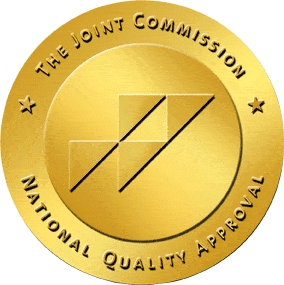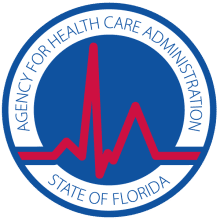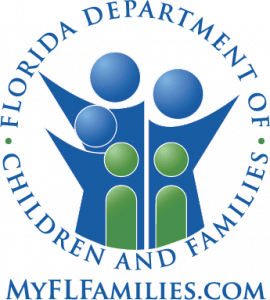Substance abuse during pregnancy puts the fetus at risk for a wide range of problems that can last a lifetime, including birth defects, behavioral problems and a variety of medical conditions. Different substances cause different problems for fetal development, and understanding how a particular substance can affect a child may be the impetus a mother needs to seek help for a substance use disorder.
Alcohol and Pregnancy
Almost 9 percent of pregnant women between the ages of 15 and 44 drank alcohol in the prior month in 2011, and 2.7 percent binge drank or consumed more than four drinks on one occasion.1 Among women in the same age group who were not pregnant, 55.5 percent drank alcohol in the past month, and 24.7 percent binge drank. These statistics show that women are getting the message about the dangers of drinking alcohol during pregnancy.
Drinking alcohol during any stage of pregnancy—including before a woman knows she is pregnant—can cause problems with fetal development. Binge drinking puts a developing fetus at the greatest risk for serious problems, but the National Institute on Alcohol Abuse and Alcoholism stresses that even smaller amounts of alcohol can damage a fetus. There is no known safe amount of alcohol during pregnancy.2
Alcohol in a developing baby’s bloodstream can cause problems with organ development and with the baby’s physiological systems. Developmental, behavioral and cognitive problems can result and may appear at any time during childhood.
Fetal Alcohol Spectrum Disorders
A number of medical disorders can result from exposing a fetus to alcohol during pregnancy. The umbrella term for these is Fetal Alcohol Spectrum Disorders, or FASD, which includes fetal alcohol syndrome, alcohol-related neurodevelopmental disorder and alcohol-related birth defects. People with FASD may have medical, behavioral, social or educational problems, including problems with:
Memory and learning
Understanding and following directions
Attention and attention span
Impulsiveness and controlling emotions
Communicating and socializing appropriately
Activities of daily living, including eating, counting money, attending to personal safety and telling time
Making poor decisions
Repeating the same mistakes
Trusting the wrong people
People with FASD are also at a higher risk of developing a substance use disorder, attention-deficit/hyperactivity disorder and depression and anxiety.
Cocaine and Pregnancy
Cocaine abuse during pregnancy can result in serious consequences for the newborn infant that can linger for a lifetime. Babies who are exposed to cocaine in the womb typically weigh less, have a shorter length and have smaller heads than their counterparts. They’re likely to be more irritable and jittery at birth, and they may have problems with sensory stimulation and interrupted sleep patterns, all of which can linger for up to 10 weeks after birth.
Cocaine exposure can also result in serious central nervous system problems that may not show up until the child is older. These include attention, behavioral and self-control problems along with increased aggression, a slower growth rate, abnormal muscle tone and learning and language problems.
Cocaine may increase the risk of pre-term delivery, which carries a number of risks including breathing difficulties, bleeding in the brain, and other serious health problems that can cause brain damage and lifelong disabilities.
Methamphetamine and Pregnancy
The National Institute on Drug Abuse supports the Infant Development, Environment, and Lifestyle (IDEAL) study that has followed over 200 children exposed to meth in utero.3 So far, the study has found that babies whose mothers abused meth during pregnancy had a lower birth weight and a lower gestational age at birth than their meth-free counterparts. They had greater lethargy and were more difficult to awaken, and they had problems maintaining normal, regular breathing.
The children were again assessed at ages three and five, and researchers found that the meth-exposed children were rated higher for emotional problems, anxiety and depression. By the age of five, these children had higher incidences of defiance, aggression and attention-deficit/hyperactivity disorder.
The data from the IDEAL study suggests that using meth during pregnancy may disrupt the development of the frontal cortex, which may impair inhibitory control and lead to behavioral problems and attention deficits.
Opioids and Pregnancy
Using opioids like heroin or prescription painkillers such as OxyContin or Vicodin during pregnancy can result in neonatal abstinence syndrome in newborns.
Neonatal abstinence syndrome, or NAS, occurs when a pregnant woman uses opioid drugs like heroin, OxyContin or methadone during pregnancy. These substances pass through the placenta, and the baby becomes dependent on them. If the mother continues using opioids within about a week before delivery, the baby will be dependent on the drug at birth, and withdrawal symptoms will set in within a week of birth, requiring an extended hospital stay.
Incidents of NAS saw a five-fold increase between 2000 and 2012, when 21,732 babies were born in the U.S. with the condition.4 The average hospital stay for a baby with NAS is 17 days, compared to 2.1 days for babies without NAS, and the average cost of hospitalization for a baby with NAS was $66,700 in 2012.
Symptoms of neonatal abstinence syndrome include:
Diarrhea and vomiting
High-pitched crying
Fever
Irritability
Poor feeding
Rapid breathing
Seizures
Slow weight gain
Tremors
For milder symptoms of NAS, treatment involves simply comforting the baby and keeping light and noise to a minimum. But in more severe cases, methadone and morphine may be administered to treat the withdrawal symptoms, and these babies may require months of hospitalization.5
Recent research shows that using buprenorphine to treat opioid dependence in pregnant women has a milder effect than methadone on babies with neonatal abstinence syndrome.
Marijuana and Pregnancy
While it’s difficult to accurately study marijuana use during pregnancy since many women use marijuana along with other substances and typically have other factors that increase the risk of fetal problems, a number of studies have found that using marijuana during pregnancy can cause premature birth, low birth weight, stillbirth and a smaller head circumference. Additionally, smoking marijuana may increase carbon monoxide levels in the blood, which can reduce the amount of oxygen the baby gets and affect fetal growth and development.
Some studies have found that heavy marijuana use during pregnancy—smoking one or more marijuana cigarettes per day—can lead to behavioral, attention and impulse control problems as well as poor academic performance and short-term memory issues.
Smoking and Pregnancy
Smoking cigarettes during pregnancy can lead to a number of problems including premature birth, certain birth defects and infant death.
Chemicals like nicotine, tar and carbon monoxide—along with hundreds of other chemicals—pass through the placenta and into the baby’s bloodstream. This can reduce the amount of oxygen that the baby gets, and it can slow the baby’s growth as well as cause damage to the heart, lungs and brain.
Birth defects related to smoking during pregnancy include cleft lip or cleft palate.6 A cleft lip is a split in the upper lip that affects the bones of the upper jaw and gum, and a cleft palate is an opening in the roof of the mouth. Smoking during pregnancy also increases the risk of miscarriage and stillbirth, and it may increase the risk of sudden infant death syndrome, or SIDS.
Abuse, Addiction and Dependence
Drug abuse, addiction, and dependence are not the same thing. Understanding the difference can help you determine what type of help you need to improve your chances of long-term recovery.
Drug Abuse
The University of Maryland Medical Center defines drug abuse as using a psychoactive substance—including alcohol—in a way that causes problems with finances, legal status, relationships or physical or mental health.7 It’s also considered drug abuse if your drug use leads you to engage in high-risk behaviors such as driving under the influence or having unprotected sex.
Drug abuse sometimes leads to addiction and dependence.
Addiction
Addiction is a disease that’s characterized by changes in brain function and structure related to memory and learning that affect thought and behavior. Using a psychoactive substance causes an increase in dopamine activity that elicits feelings of pleasure and well-being. The brain makes a connection between using the substance and these pleasant feelings, and each time the substance is used, this connection becomes stronger.
Over time, the changes that occur in the brain may lead to intense cravings for the substance and compulsive drug-seeking and -using behaviors. Once an addiction sets in, willpower and good intentions are rarely enough to overcome the compulsion to use drugs for the long term.8 In most cases, professional treatment is essential for breaking the ongoing cycle of relapse and remission.
Dependence
Although dependence typically occurs along with addiction, this isn’t always the case. When you use a psychoactive substance, your brain compensates for its presence by changing the activity of brain chemicals to normalize brain function. This is characterized by building up a tolerance to the substance, which means that you need increasingly higher doses in order to get the desired effects.
Over time, brain function may shift so that your brain now functions more “normally” when the substance is present than when it’s not. As a result, when you stop using the substance, brain function rebounds and causes withdrawal symptoms. Experiencing withdrawal symptoms when the substance is withheld is the primary indication that dependence has developed.
Treating Dependence During Pregnancy
Withdrawal symptoms are typically uncomfortable enough that most people who try to quit on their own will return to the substance of abuse simply to end the discomfort. In some rare cases, withdrawal from alcohol or central nervous system sedatives can be dangerous or even fatal.
Medical detox helps increase the chances of successfully getting through the withdrawal stage. During medical detox, which is supervised by medical and mental health professionals, the substance of abuse is withheld so that brain function can begin to return to normal. A variety of medications are used as needed to help reduce the severity of withdrawal symptoms and shorten the length of time it takes to detox. Many of the medications used can be safely administered during pregnancy.
For opioid dependence, methadone or buprenorphine is used as short-term or long-term maintenance to prevent the onset of withdrawal symptoms and keep intense cravings at bay so that a woman can make it through pregnancy without relapsing. Both methadone and buprenorphine will cause the baby to be born with neonatal abstinence syndrome, although buprenorphine is associated with milder withdrawal symptoms.
During medical detox, alternative therapies like acupuncture, meditation or yoga are used to help reduce stress and improve feelings of well-being. A high level of support from staff and others in withdrawal helps to make the detox process more comfortable.
Treating Addiction During Pregnancy
Treating addiction is far more complex than treating physical dependence since addiction typically has a variety of underlying causes and contributors, such as genetic disposition, stress, mental illness, trauma or a dysfunctional family system.
Treatment plans are highly individualized and draw on a woman’s strengths, cultural beliefs, preferences and other factors to ensure it’s a plan that will best help her achieve long-term successful recovery.
Addiction treatment delves into the underlying causes through a variety of psychotherapies, or “talk” therapies. Cognitive-behavioral therapy is the most commonly used and successful therapy and involves helping clients identify thought patterns, attitudes, ideas and behaviors that are unhealthy and self-destructive. Through group and individual therapy sessions, they learn to replace these unhealthy thoughts and behaviors with healthier ways of thinking and behaving.
Clients in a treatment setting develop an arsenal of skills, strategies and techniques to help them cope with triggers and high-risk situations that can quickly lead to relapse. Family therapy is a major part of treatment. This approach helps families learn healthier ways of communicating and repairing damaged trust and broken relationships.
An educational component of treatment helps clients understand the mechanics of addiction, dependence, lapse and relapse so that they’re fully aware of how lapses occur and how these can lead to a relapse of the addiction, which is characterized once again by compulsive drug abuse despite negative consequences.
Addiction treatment through a high-quality program takes a holistic approach to recovery and draws on both traditional and alternative therapies. It seeks to identify and meet all of an individual’s needs, which is essential for successful recovery. For many pregnant women, these needs will include prenatal medical care, safe housing, educational or vocational assistance and parenting classes. Help with self-care issues such as learning about proper nutrition and the importance of adequate sleep and exercise for a healthy pregnancy is also often helpful.
An aftercare plan is set in place once treatment is complete. Aftercare will typically include participation in a peer support group, ongoing individual, group and family therapy and periodic evaluations to assess for changing or emerging needs.
Why Some Women Don’t Seek Help for Addiction and Dependence
Women face a number of barriers when it comes to getting help for a drug or alcohol addiction. According to the National Institute of Alcohol Abuse and Alcoholism, women are less likely than men to seek treatment, and if they do, they’re more likely to seek care in primary medical or mental health settings, which have less favorable outcomes than professional treatment programs.9
According to the NIAAA, some of the barriers women face when seeking treatment include:
Economic barriers
Time constraints due to family responsibilities
Transportation issues
Anxiety or depression
Fear of stigmatization
Lack of information about treatment options
Limitations in everyday functioning due to addiction and dependence.
These barriers may be even more of a problem for pregnant women, who not only face stigmatization but who may also be looking at criminal charges. Current drug enforcement policies may not only deter pregnant women from seeking treatment for a drug or alcohol problem but may also deter them from seeking prenatal care.10
As of 2010, fifteen states have criminalized drug abuse during pregnancy, considering it child abuse under civil child welfare statutes. Three other states consider substance abuse during pregnancy to be grounds for involuntary commitment to a treatment or mental health facility.
While these policies have been shown ineffective at reducing substance abuse during pregnancy, they have been found to put the therapeutic relationship between the OBGYN and patient at risk. One study found that women who abused drugs avoided prenatal care because they didn’t trust health care providers to protect them from legal and social consequences of drug abuse, which may include losing custody of other children, losing housing and involuntary commitment or even incarceration.
The American Congress of Obstetricians and Gynecologists denounces the use of the legal system to address substance abuse during pregnancy and calls on practitioners in states where substance abuse during pregnancy is criminalized to work with policymakers and legislators to retract this type of legislation and implement research-based strategies to address prenatal substance abuse and addiction.
There is Hope: Recovery is Possible
Hope is the foundation of recovery.11 Hope is the belief that the challenges of recovery can be met and overcome and that a better future is possible.
For pregnant women who are struggling with addiction and the guilt, shame, helplessness and hopelessness that often accompanies it, treatment can not only help send the addiction into long-term remission but also help improve their self-esteem and self-efficacy, identify a meaningful purpose in life and dramatically improve their overall quality of life and sense of well-being.
Treatment options include inpatient, outpatient, and intensive outpatient programs. Treatment programs geared toward women strive to address the barriers to treatment that women face and work with them to develop a treatment plan that considers their finances, responsibilities at home or work and other essential factors that may prevent their engagement in treatment.
There is hope. Treatment works, and during pregnancy, it can mean the difference between a healthy baby and one with serious health and behavioral problems that may last a lifetime. Treatment can mean the difference between a healthy mother and one who struggles with substance abuse and puts her children at risk for a number of social and emotional problems down the road.
Sources:
18 Percent of Pregnant Women Drink Alcohol During Early Pregnancy. (2013, September 9). Retrieved from http://www.samhsa.gov/data/sites/default/files/spot123-pregnancy-alcohol-2013/spot123-pregnancy-alcohol-2013.pdf
Fetal Alcohol Exposure. (2015, April). Retrieved from https://pubs.niaaa.nih.gov/publications/FASDFactsheet/FASD.pdf
Prenatal Methamphetamine Exposure Linked With Problems. (2012, December 21). Retrieved from https://www.drugabuse.gov/news-events/nida-notes/2012/12/prenatal-methamphetamine-exposure-linked-problems
Dramatic Increases in Maternal Opioid Use and Neonatal Abstinence Syndrome. (2015, September). Retrieved from https://www.drugabuse.gov/related-topics/trends-statistics/infographics/dramatic-increases-in-maternal-opioid-use-neonatal-abstinence-syndrome
Neonatal Abstinence Syndrome. (2015, November 3). Retrieved from https://medlineplus.gov/ency/article/007313.htm
Smoking During Pregnancy. (2015, December). Retrieved from http://www.marchofdimes.org/pregnancy/smoking-during-pregnancy.aspx
Drug Abuse. (2013, February 8). Retrieved from http://umm.edu/health/medical/ency/articles/drug-abuse
DrugFacts: Understanding Drug Use and Addiction. (2016, August). Retrieved from https://www.drugabuse.gov/publications/drugfacts/understanding-drug-use-addiction
Green, C. A. (n.d.). Gender and Use of Substance Abuse Treatment Services. Retrieved from https://pubs.niaaa.nih.gov/publications/arh291/55-62.htm
Substance Abuse Reporting and Pregnancy: The Role of the Obstetrician-Gynecologist. (2011, January). Retrieved from http://www.acog.org/Resources-And-Publications/Committee-Opinions/Committee-on-Health-Care-for-Underserved-Women/Substance-Abuse-Reporting-and-Pregnancy-The-Role-of-the-Obstetrician-Gynecologist
Recovery and Recovery Support. (2015, October 5). Retrieved from https://www.samhsa.gov/recovery



